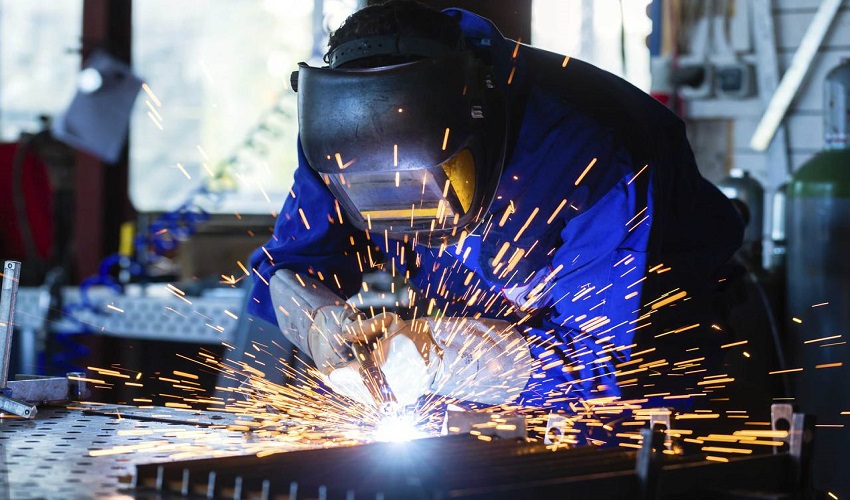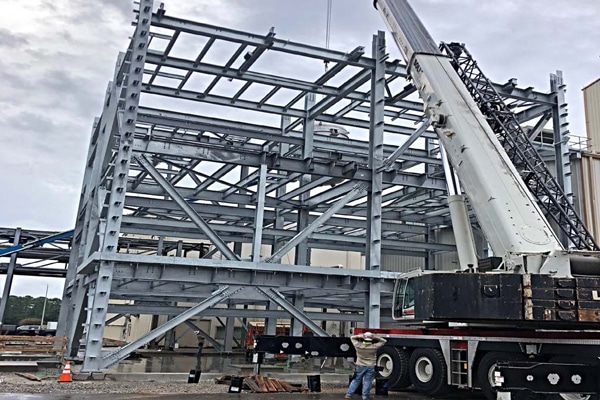Metal Fabrication Melbourne: Accuracy Engineering for All Demands
Metal Fabrication Melbourne: Accuracy Engineering for All Demands
Blog Article
Top Techniques for Optimizing Steel Construction Processes for Maximum Efficiency
From precise layout preparing to embracing sophisticated innovations, the pursuit for maximum efficiency in steel construction involves a diverse approach. Allow's explore exactly how these strategies can reinvent steel fabrication processes, leading the way for unprecedented performance and competitiveness in the industry.
Efficient Design Preparation
In the world of steel fabrication procedures, calculated and efficient layout preparation plays a critical duty in simplifying manufacturing workflows and making the most of functional efficiency. The design of a steel manufacture facility straight impacts the efficiency of operations, material circulation, and employee productivity. By meticulously making the plan of machinery, workstations, storage space areas, and product handling tools, business can dramatically minimize unnecessary movement, reduce product taking care of times, and optimize the overall production process.
An effective design strategy takes into consideration factors such as workflow sequences, proximity of workstations, material handling routes, and safety policies. It aims to create a rational and streamlined flow of activities from basic material consumption to the last item send off. Via reliable design preparation, firms can remove traffic jams, minimize production downtime, and improve the general operational efficiency of the steel fabrication procedure.
In addition, a well-balanced design plan enables better utilization of readily available room, enhanced communication between employees, and improved security practices within the center. On the whole, investing time and resources in creating a reliable design plan can generate considerable benefits in regards to boosted productivity and price financial savings for steel construction businesses.
Advanced Reducing Technologies
Using cutting-edge modern technologies in steel construction processes boosts precision, efficiency, and general production top quality. Advanced cutting modern technologies play a critical function in streamlining procedures and optimizing the manufacture procedure. Among the most noticeable innovations in this area is the implementation of laser reducing systems. Laser cutting deals unequaled accuracy, permitting elaborate designs and complicated shapes to be cut with marginal material waste. Additionally, plasma cutting modern technology has likewise revolutionized steel construction by making it possible for swift and accurate reducing via electrically conductive materials. This technique is specifically effective for reducing thick steel plates with rate and precision. Water jet cutting is another ingenious modern technology that uses a high-pressure stream of water to puncture numerous kinds of materials, consisting of steel, with remarkable accuracy. By including these innovative cutting technologies into steel fabrication processes, makers can significantly enhance effectiveness, minimize manufacturing times, and inevitably enhance the quality of their products.
Automated Welding Equipments

One of the key benefits of automated welding systems is their ability to preserve a high degree of accuracy throughout the welding procedure. The accuracy provided by these systems ensures that welds are uniform and fulfill the needed requirements, resulting in more powerful and much more reputable steel structures. Furthermore, automated welding systems reduce the danger of human mistake, resulting in fewer issues and rework.
Moreover, these systems can handle complicated welding tasks with simplicity, consisting of welding in limited spaces or on rounded surface areas. This versatility makes automated welding systems appropriate for a wide variety of steel construction applications, from large industrial jobs to complex personalized designs. In general, the application of automated welding systems in steel fabrication procedures significantly enhances effectiveness, high quality, and total task outcomes.

Supply Management Solutions
Enhancing operational efficiency and streamlining procedures, reliable supply monitoring remedies play a crucial role in maximizing steel manufacture operations. By applying durable stock administration systems, steel construction companies can ensure that the right materials are available when required, decreasing disturbances and hold-ups in production schedules. Making use of innovative software application options enables real-time tracking of inventory degrees, allowing accurate projecting of product needs and protecting against stockouts or overstock scenarios.
Additionally, supply administration options help top article in reducing carrying costs connected with excess supply and improve cash circulation by lining up inventory levels with real demand. By classifying products based on use frequency and urgency, producers can focus on procurement and storage room allowance, even more boosting operational performance. Furthermore, carrying out barcode or RFID technology assists in accurate supply tracking and streamlines the monitoring of product movements within the center.
Continuous Refine Improvement
To build on the gains made through efficient supply administration remedies, the emphasis now moves in the direction of driving continuous process renovation within steel fabrication procedures. Constant procedure improvement is a methodical strategy targeted at improving performance, decreasing waste, and enhancing total quality throughout the fabrication procedure. By applying a culture of constant enhancement, steel manufacture firms can determine traffic jams, simplify workflows, and optimize resources to make best use of productivity.
One secret facet of continual process improvement in steel fabrication is the routine evaluation and evaluation of manufacturing processes. This involves event comments from workers, checking vital performance indicators, and identifying areas for enhancement. By leveraging data-driven insights, firms can make educated choices to drive significant modifications that favorably affect operations.
Additionally, embracing lean production principles can considerably contribute to process improvement look at more info in steel fabrication. steel fixing. Methods such as value stream mapping, 5S organization, and Kaizen occasions can aid remove non-value-added activities, standardize processes, and cultivate a society of advancement and constant knowing within the organization
Conclusion
To conclude, optimizing steel construction procedures for optimal efficiency needs mindful preparation, utilizing sophisticated reducing modern technologies, implementing automated welding systems, handling stock properly, and continuously improving processes. By including these approaches, manufacturers can enhance efficiency, minimize prices, and boost overall performance in the steel fabrication industry.
Through efficient design preparation, business can remove traffic jams, reduce production downtime, and enhance the overall operational efficiency of the steel fabrication process. steel fabrication melbourne.
Using innovative innovations in steel construction processes improves precision, efficiency, and total production high quality. By incorporating these advanced cutting technologies right into steel manufacture procedures, makers can substantially enhance efficiency, reduce manufacturing times, and inevitably improve the high quality of their products.
Overall, the execution of automated welding systems in steel construction processes significantly boosts performance, high quality, and overall task results.
One key facet of continual process improvement in steel manufacture is the routine review and evaluation of production procedures. (metal fabrication melbourne)
Report this page